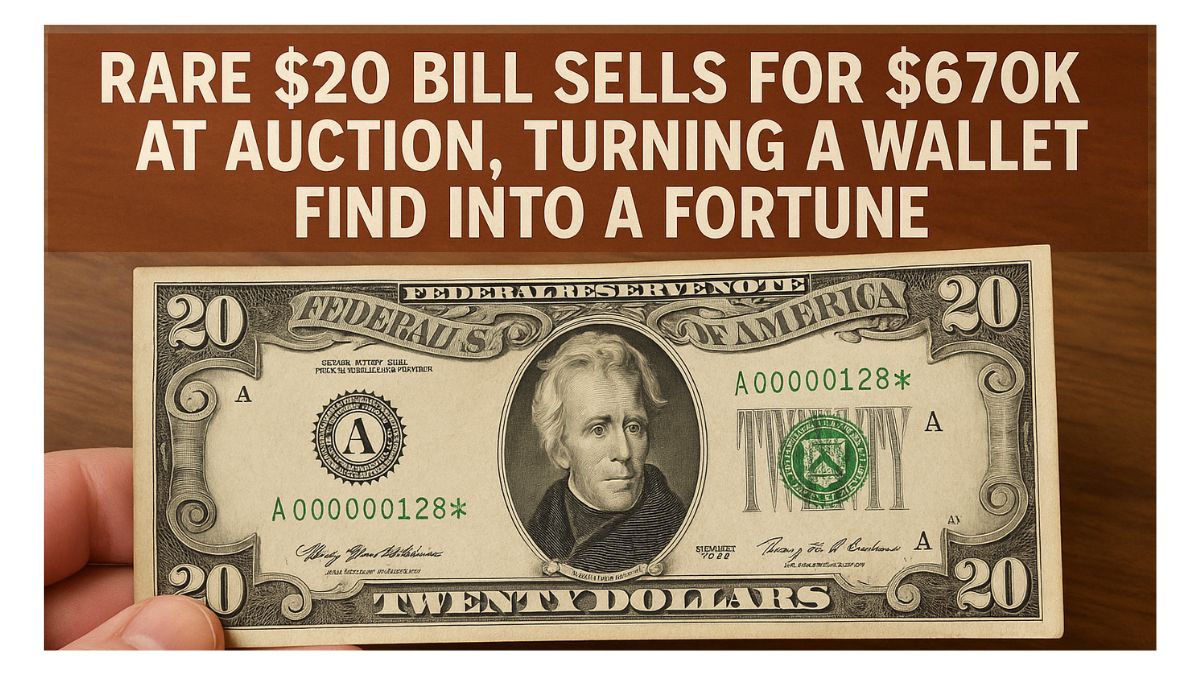In an astonishing turn of events, a seemingly ordinary $20 bill has transformed into a monumental windfall, fetching a staggering $670,000 at a recent auction.
This remarkable story underscores the unpredictable nature of currency collecting and the potential hidden treasures circulating in everyday transactions.
The Discovery: From Wallet to Wealth
The journey of this rare $20 bill began innocuously when an individual discovered it tucked away in their wallet.
At first glance, it appeared to be just another piece of currency. However, upon closer inspection, the bill revealed unique characteristics that set it apart from the standard issue.
What Makes This $20 Bill So Valuable?
Several factors contributed to the exceptional value of this $20 bill:
- Obscure Printing Error: The bill exhibited a rare printing anomaly, a misalignment during the printing process, rendering it unique.
- Historical Significance: Issued during a transitional period in currency design, the bill holds historical importance among collectors.
- Condition: Graded in near-mint condition, the bill’s preservation added to its desirability.
- Collector Demand: A surge in interest for rare and error notes has driven up prices in recent years.
Auction Details: The $670,000 Sale
The bill was presented at a renowned currency auction house, where it attracted intense bidding.
After a series of competitive offers, the final hammer price reached an unprecedented $670,000, setting a new record for a $20 bill at auction.
Understanding the Market for Rare Currency
The market for rare and collectible currency has seen significant growth, with certain bills achieving prices that far exceed their face value.
Collectors and investors alike seek out these anomalies, driven by the potential for substantial returns and the thrill of owning a piece of history.
Factors Influencing Currency Value
Several elements determine the value of a currency note:
- Rarity: The fewer the number of a particular note in existence, the higher its value.
- Condition: Bills in pristine condition are more sought after.
- Historical Context: Notes with significant historical events associated with them can command higher prices.
- Collector Interest: The demand within the collector community can drive prices up.
The Role of Auctions in Determining Value
Auctions play a pivotal role in establishing the market value of rare currency. They provide a platform for buyers and sellers to agree on a price, often reflecting the current market sentiment and demand.
Implications for Everyday Currency Holders
This extraordinary sale serves as a reminder that everyday currency holders may possess valuable notes without realizing it. It encourages individuals to examine their bills for unique features that could potentially be worth a small fortune.
The sale of this rare $20 bill for $670,000 exemplifies the fascinating world of currency collecting and the unexpected treasures that can be found in the most commonplace places. It highlights the importance of awareness and the potential rewards of paying attention to the details in everyday life.
FAQs
What makes a $20 bill rare?
Factors such as printing errors, historical significance, and unique serial numbers can make a $20 bill rare and valuable.
How can I determine if my currency is valuable?
Consult with professional currency graders or numismatists, and look for unique features like misprints, unusual serial numbers, or limited print runs.
Where can I sell rare currency?
Rare currency can be sold through reputable auction houses, specialized dealers, or online platforms dedicated to numismatics.
